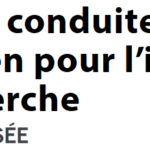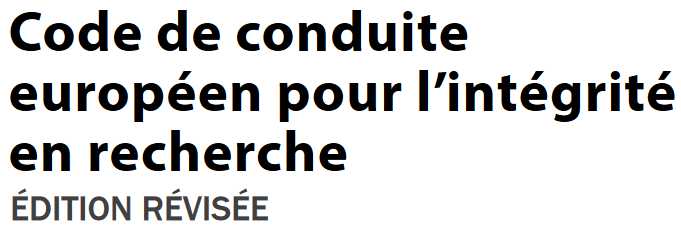Le domaine de la recherche en éducation est souvent décevant. Les études qualitatives sont souvent peu reproductibles, pour diverses raisons dont la mauvaise méthodologie. Un groupe d’experts en médecine factuelle vient de publier non seulement les 17 items de GREET (Guideline for Reporting Evidence-based practice Educational interventions and Teaching), mais aussi toutes les méthodes pour arriver à GREET. La description est détaillée, avec des méthodes Delphi notamment, et un tableau précisant les accords des 31 experts pour chacun des 17 items : intéressant. La publication dans BMC Medical Education de septembre 2016 a pour titre : Development and validation of the guideline for reporting evidence-based practice educational interventions and teaching (GREET). Il est remarquable de constater que le protocole de réalisation de GREET avait été publié en janvier 2013 dans la même revue : bonne pratique assez rare. Le site EQUATOR a une page sur GREET.
Si vous évaluez des méthodes de formation, des activités en éducation, décrivez mieux vos interventions, et donc suivez GREET que voici, en attendant une version française.
BRIEF NAME
- INTERVENTION: Provide a brief description of the educational intervention for all groups involved [e.g. control and comparator(s)].
WHY – this educational process
- THEORY: Describe the educational theory (ies), concept or approach used in the intervention.
- LEARNING OBJECTIVES: Describe the learning objectives for all groups involved in the educational intervention.
- EBP CONTENT: List the foundation steps of EBP (ask, acquire, appraise, apply, assess) included in the educational intervention.
WHAT
- MATERIALS: Describe the specific educational materials used in the educational intervention. Include materials provided to the learners and those used in the training of educational intervention providers
- EDUCATIONAL STRATEGIES: Describe the teaching/learning strategies (e.g. tutorials, lectures, online modules) used in the educational intervention.
- INCENTIVES: Describe any incentives or reimbursements provided to the learners.
- WHO PROVIDED
- INSTRUCTORS: For each instructor(s) involved in the educational intervention describe their professional discipline, teaching experience/expertise. Include any specific training related to the educational intervention provided for the instructor(s).
HOW
- DELIVERY: Describe the modes of delivery (e.g. face-to-face, internet or independent study package) of the educational intervention. Include whether the intervention was provided individually or in a group and the ratio of learners to instructors.
WHERE
- ENVIRONMENT: Describe the relevant physical learning spaces (e.g. conference, university lecture theatre, hospital ward, community) where the teaching/learning occurred.
WHEN and HOW MUCH
- SCHEDULE: Describe the scheduling of the educational intervention including the number of sessions, their frequency, timing and duration.
- Describe the amount of time learners spent in face to face contact with instructors and any designated time spent in self-directed learning activities.
PLANNED CHANGES
- Did the educational intervention require specific adaptation for the learners? If yes, please describe the adaptations made for the learner(s) or group(s).
- UNPLANNED CHANGES
- Was the educational intervention modified during the course of the study? If yes, describe the changes (what, why, when, and how).
HOW WELL
- ATTENDANCE: Describe the learner attendance, including how this was assessed and by whom. Describe any strategies that were used to facilitate attendance.
- Describe any processes used to determine whether the materials (item 5) and the educational strategies (item 6) used in the educational intervention were delivered as originally planned.
- Describe the extent to which the number of sessions, their frequency, timing and duration for the educational intervention were delivered as scheduled (item 11)




